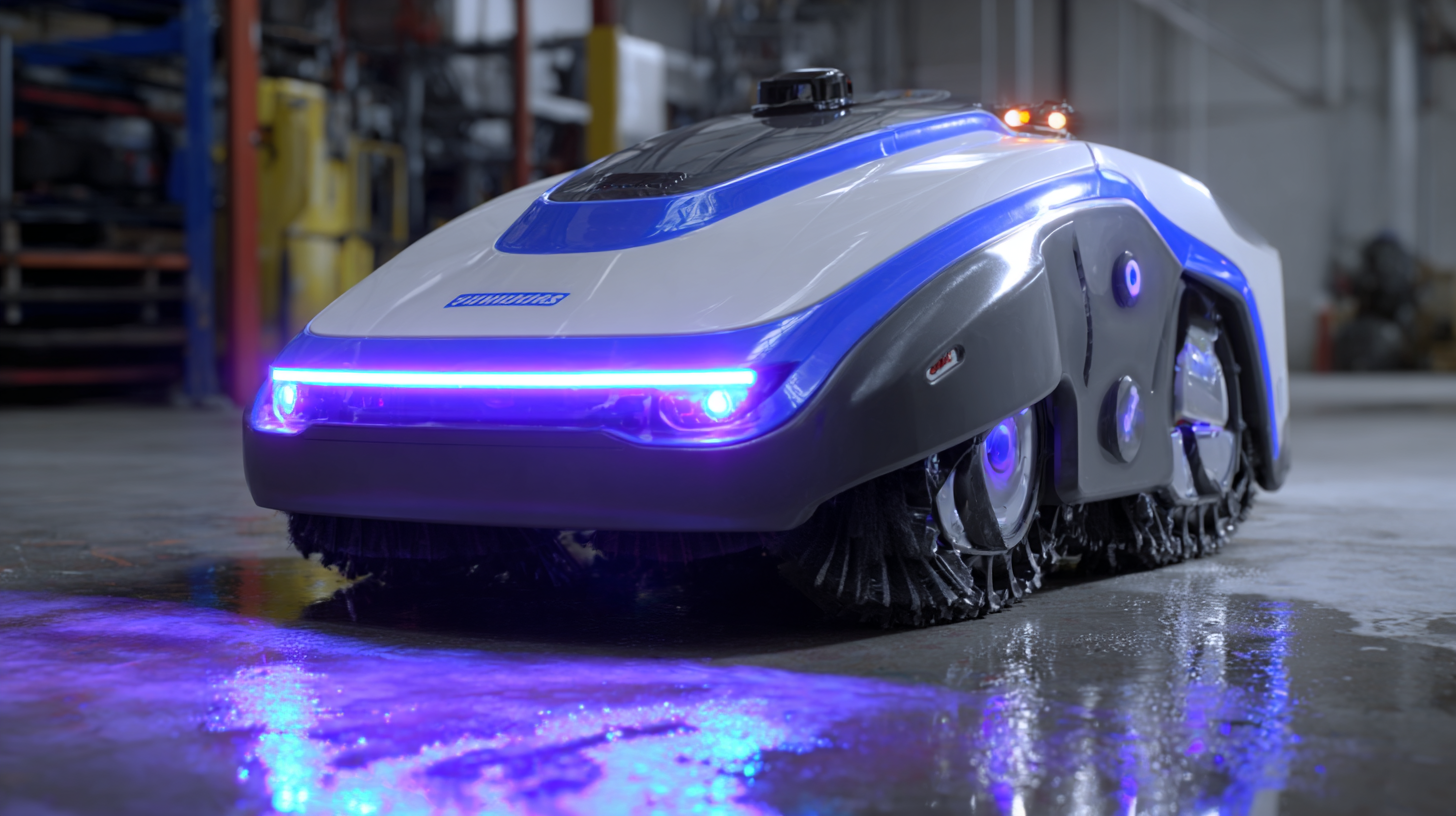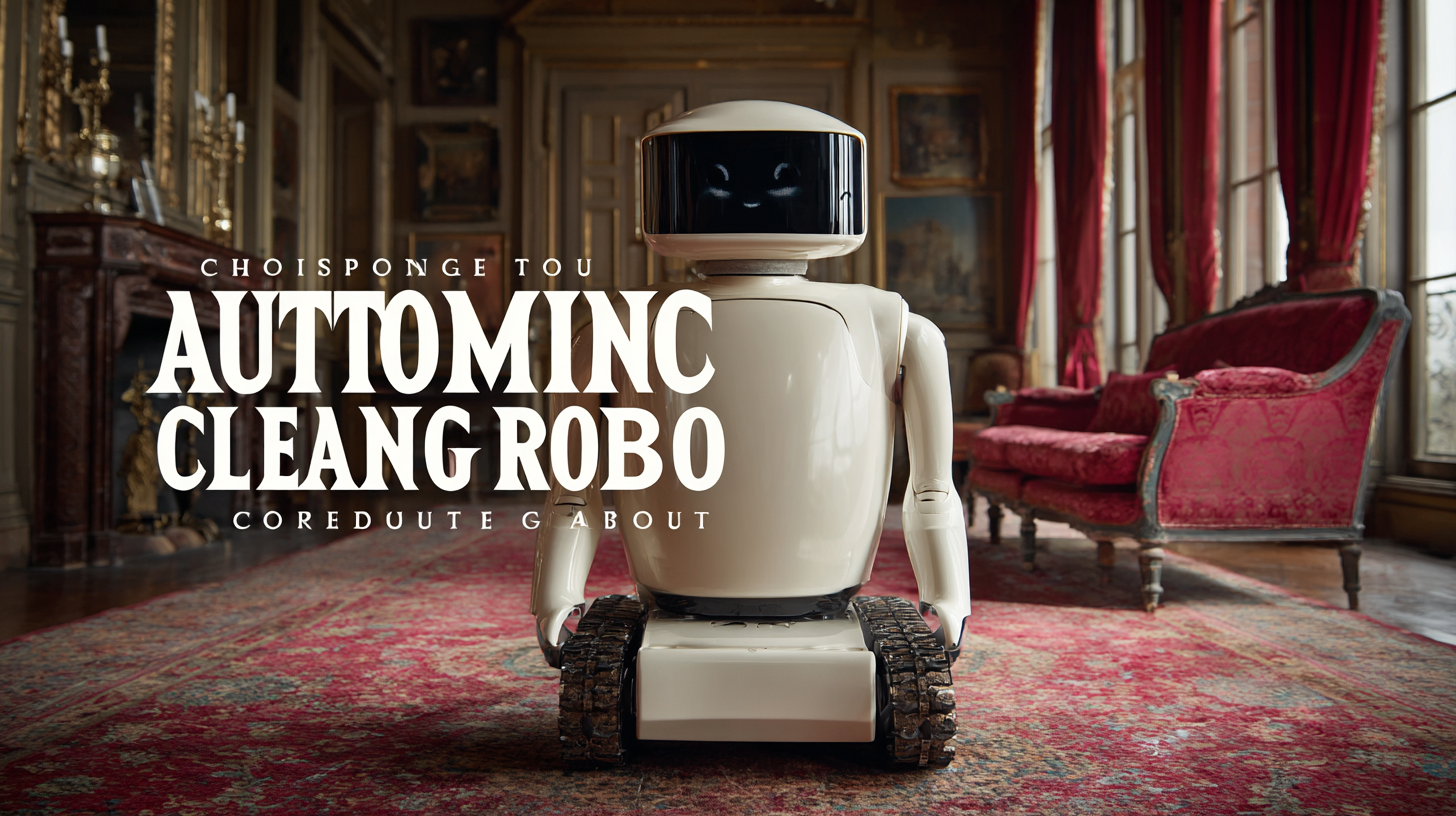
sale@excitechrobot.com

14, Raghava Enclave, Transport Road, Secunderabad, Hyderabad (500009)
©2024 All Rights Reserved by BlackCoffeeRobotics
In today's fast-paced business environment, maintaining cleanliness and hygiene is paramount, prompting many enterprises to seek innovative solutions to streamline their operations. The rise of Autonomous Cleaning Robots has transformed the cleaning industry, with reports indicating that the global market for robotic cleaners is projected to reach $5.4 billion by 2027, expanding at a CAGR of 20.5% from 2020 to 2027. These advanced machines not only enhance efficiency but also reduce operational costs, allowing businesses to allocate resources more strategically. As companies increasingly recognize the value of investing in technology that offers consistency and reliability, choosing the right Autonomous Cleaning Robot becomes a critical decision. This guide aims to provide a comprehensive checklist, ensuring that your selection process is informed by industry insights and tailored to the specific needs of your business, paving the way for a cleaner and more productive working environment.

When selecting an autonomous cleaning robot for your business, several key features must be considered to ensure it meets your operational needs. Firstly, the navigation technology plays a critical role. Advanced robots utilize LIDAR and computer vision, allowing them to map spaces with high precision. According to a report by MarketsandMarkets, the global robotics market is projected to reach $214 billion by 2030, highlighting the significant investment in sophisticated navigational capabilities that enhance productivity in commercial spaces.
Another essential feature is the cleaning system efficiency. Robots equipped with HEPA filtration systems not only clean surfaces but also improve indoor air quality, which is increasingly important in workplaces. The International Association of Indoor Air Quality estimates that poor indoor air can reduce worker productivity by up to 11%. This emphasizes the need for cleaning robots to have effective filtration methods, ensuring a healthier environment for employees and customers alike.
Additionally, consider the robot's adaptability to different surfaces and its ease of maintenance. A study by Allied Market Research indicates that demand for multi-surface cleaning solutions has surged, as organizations seek versatile tools to maintain diverse environments. A robot that can seamlessly transition between carpet, tile, and hardwood floors can significantly enhance cleaning efficiency and reduce operational disruption.

As the demand for autonomous cleaning solutions continues to rise, understanding the cost-benefit analysis of these robots becomes crucial for businesses looking to invest in the technology by 2025. The global market for floor cleaning machines, including manual scrubbers, ride-on scrubbers, and stand-on scrubbers, is projected to grow significantly, driven primarily by increasing urbanization and hygiene standards across various sectors such as commercial, industrial, and transportation. Reports suggest that the market may experience a compound annual growth rate (CAGR) of over 5% reaching $6 billion by 2033.
Moreover, the autonomous solar panel cleaning market is expected to exceed $1 billion in size by 2024, fueled by the growing adoption of solar energy. Between 2025 and 2034, this segment anticipates a robust CAGR exceeding 7.2%, indicating strong investment benefits. This rise in market size can be attributed to the increasing efficiency of solar panels through regular cleaning, leading to significant energy production improvements.
Tips: When selecting an autonomous cleaning robot, consider the type based on your specific needs. For larger areas, ride-on scrubbers may offer the best efficiency. Additionally, calculate potential ROI by factoring in time savings and reduced labor costs, ensuring your investment aligns with overall operational goals. Lastly, explore options with advanced AI capabilities that can adapt to varying environments for optimal performance.

Artificial Intelligence (AI) and Machine Learning (ML) are revolutionizing various sectors, including the cleaning industry. By leveraging advanced algorithms and data analysis, autonomous cleaning robots are now more efficient and effective than ever. These technologies enable robots to adapt to different environments, learn from their surroundings, and optimize their cleaning processes in real-time. With AI-powered sensors, these robots can detect dirt and obstacles, ensuring thorough cleaning without human intervention. As businesses seek to enhance cleanliness standards while reducing operational costs, the integration of AI in cleaning solutions represents a significant step forward.
Moreover, the application of AI in cleaning services aligns with broader trends observed in industries like biopharma and public transit, where the focus on operational efficiency is paramount. For instance, just as AI is transforming clinical trials by accelerating processes, it similarly boosts cleaning efficiency by automating routines and minimizing human error. This is crucial in high-traffic commercial spaces that demand high levels of cleanliness. As a result, businesses can not only improve hygiene but also create a safer and more pleasant environment for staff and customers alike. The evolution of AI in cleaning is not just a technological advancement; it's a comprehensive approach to better business operation and service enhancement.
As we move towards 2025, the landscape of autonomous cleaning robots continues to evolve at an impressive pace. Businesses looking for efficient, cost-effective solutions should keep an eye on some of the top contenders set to revolutionize the industry. These advanced robots not only save time but also enhance the cleanliness and safety of commercial spaces. With enhanced sensors, AI-driven navigation, and improved durability, the latest models can handle a variety of surfaces and adapt to changing environments seamlessly.
Among the leading autonomous cleaning robots to watch in 2025, some are particularly noteworthy for their innovative features. Robots with advanced mapping capabilities allow for unparalleled precision in cleaning tasks, ensuring that no area is overlooked. Additionally, models with integrated data analytics offer business owners insights into cleaning patterns and efficiency metrics, empowering them to optimize operations. The ongoing integration of smart technology means these robots will become even more efficient over time, making investing in the right autonomous cleaning solution a crucial decision for businesses aiming for operational excellence.
| Model | Cleaning Area (sq ft) | Battery Life (hours) | Dustbin Capacity (liters) | Smart Features | Estimated Price ($) |
|---|---|---|---|---|---|
| Model A | 2000 | 3.5 | 0.5 | App Control, Virtual Mapping | 499 |
| Model B | 1500 | 4.0 | 0.7 | Voice Control, Schedule Cleaning | 399 |
| Model C | 2500 | 5.0 | 1.0 | AI Learning, Auto-Charging | 599 |
| Model D | 1800 | 2.5 | 0.4 | Mopping Function, Remote Control | 349 |
As we move closer to 2025, the realm of cleaning technology is poised for remarkable innovations that will transform how businesses maintain cleanliness and hygiene. One of the most exciting advancements expected is the integration of artificial intelligence in autonomous cleaning robots. These robots will not only navigate spaces with greater efficiency but will also learn from their surroundings, adapting their cleaning patterns to optimize performance. This smarter approach promises to enhance cleaning effectiveness while reducing operational costs for businesses.
In addition to AI, we can anticipate the emergence of more sustainable and eco-friendly cleaning solutions. Future robots are likely to utilize biodegradable cleaning agents and energy-efficient designs, responding to the growing demand for environmentally responsible practices. Moreover, the incorporation of real-time data analytics will allow businesses to monitor their cleaning operations remotely, adjusting schedules and methods based on usage patterns and specific needs. These innovations will not only streamline cleaning processes but also contribute to a healthier workplace environment, showcasing a harmonious blend of technology and sustainability.
